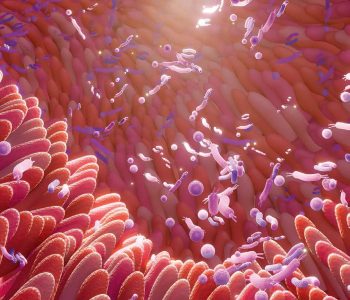Understanding the dynamics of gut microbiota and how this impacts the intestinal health of poultry is a key aspect for production. The intricate interplay between the intestinal microbiota and the integrity of the intestinal barrier is fundamental to the overall health and performance of poultry. Here, we delve into the mechanisms underpinning intestinal health, focusing on the pivotal roles of gut microbiota modulation and barrier function maintenance in poultry health.
Gut Microbiota and Intestinal Health
Factors Influencing Gut Microbiota
Numerous factors can perturb the equilibrium of gut microbiota in poultry. These include dietary factors such as antinutritional components, exposure to heavy metals and toxins, as well as the administration of antibiotics. The consequences of such disturbances extend beyond the gut, impacting immune function, nutrient absorption, and overall performance of poultry.
Nutraceuticals and Gut Health
Nutraceuticals can include:
- Isolated nutrients (vitamins, minerals, amino acids, fatty acids);
- Herbal goods (polyphenols, herbs, spices);
- Dietary supplements (probiotics, prebiotics, synbiotics, organic acids, antioxidants, enzymes); and
- Genetically modified foods.
Intestinal Barrier and Tight Junctions
Enterocytes form the cornerstone of the intestinal mucosal monolayer, serving as guardians against external threats. These enterocytes are intricately connected by tight junctions (TJs), forming a continuous belt of intimate contacts. Comprising integral transmembranes such as occludin and claudins, along with peripheral membranes like zonula occludens, these TJs seal the paracellular space, regulating the permeability of the intestinal barrier. By preventing the transit of microorganisms, toxins, and antigens from the intestinal lumen into systemic circulation, these proteins play a pivotal role in preserving intestinal integrity.
Regulation Mechanisms
The formation and function of tight junctions are tightly regulated by intracellular signal transduction pathways. Signaling cascades involving Protein kinase C (PKC), A (PKA), and G (PKG), as well as Phosphatase-Rho, myosin light chain kinase (MLCK), and MAPK pathways, orchestrate the assembly and maintenance of tight junctions. Disruptions to these junctions, triggered by bacterial factors such as lipopolysaccharide (LPS), can culminate in increased intestinal permeability, leading to conditions like leaky gut syndrome.
Biomarkers and Intestinal Health
The intricate interplay between epithelial barrier function, intestinal inflammation, and the microbial environment underscores the need for reliable biomarkers to assess intestinal health. Biomarkers related to oxidative stress, immune activity, and intestinal permeability offer valuable insights into gut health status. From antioxidant enzymes like superoxide dismutase (SOD) to indicators of immune function such as secretory IgA (SIgA), these biomarkers provide a window into the physiological state of the intestine. Additionally, markers of intestinal permeability, including gene expression of tight junction proteins and bacterial translocation, serve as valuable tools for evaluating gut integrity and function.
Future Directions
As research continues to unravel the complexities of intestinal health, the quest for novel biomarkers and evaluation techniques remains ongoing. Non-invasive biomarkers, such as those detectable in fecal samples, offer promise for streamlined monitoring of intestinal health in poultry. By leveraging advancements in biomarker research and developing robust inflammatory gut models, stakeholders can enhance our understanding of intestinal function and pave the way for proactive management strategies. Ultimately, the pursuit of intestinal health biomarkers that are accessible, cost-effective, and reflective of gut physiology remains paramount in advancing poultry welfare and performance.
You may also like to read: “Probiotics and Essential Oils as AGP Alternatives in Poultry”
Read more about this topic at aviNews International
